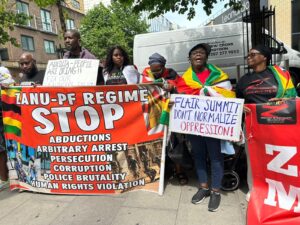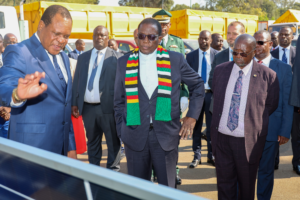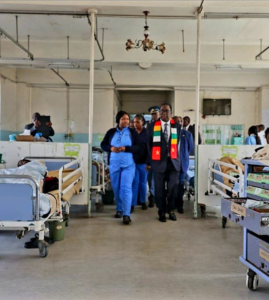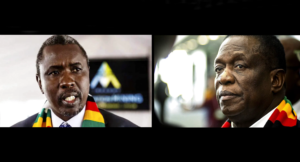MBUDZI INTERCHANGE: ANOTHER SYMBOL OF ZIMBABWE’S CORRUPTION AND MISMANAGEMENT

The Mbudzi Traffic Interchange in Harare is yet another glaring example of Zimbabwe’s corruption and poor governance. The project, part of the Harare-Beitbridge highway renovations, is expected to cost an eye-watering US$88 million upon completion. When compared to South Africa’s Mount Edgecombe Interchange in Durban—a far more complex and sophisticated structure that cost US$65.936 million—the overpricing of the Mbudzi project is impossible to ignore.
The US$22 million difference between the two projects is not just alarming; it is a blatant indication of either incompetence, corruption, or both. The Mount Edgecombe Interchange, completed in 2018, is a four-level marvel with 23 piers and a 948-meter-long bridge. It connects multiple critical routes, including the N2, Verulam, Umhlanga, Durban North, and Phoenix. In contrast, Mbudzi is a far less ambitious and less intricate structure, yet its cost exceeds South Africa’s largest interchange by millions of dollars.
Zimbabweans are not fooled by the staggering price tag. Few believe that the Mbudzi project could genuinely cost US$88 million. Many suspect that even half of that amount would be excessive. The cost comparison with Mount Edgecombe only reinforces the belief that this project has become a conduit for corruption and self-enrichment for those in power.
The contractors for the Mbudzi project were handpicked, a process often criticized for its lack of transparency. These contractors, known to have ties to senior government officials, are notorious for inflating prices to outrageous levels. Their cozy relationships with those in power ensure that they continue to win lucrative contracts at the expense of Zimbabwean taxpayers.
This kind of corruption is a hidden tax on the poor. Public infrastructure projects, like the Mbudzi interchange, are meant to improve the lives of citizens. Instead, they have become tools for enriching a select few while the public pays the price. Mismanagement, cost escalations, and a lack of transparency in such projects are damaging to economically vulnerable countries like Zimbabwe.
Public officials, who are supposed to oversee these massive budgets, are often complicit. Instead of ensuring accountability and value for money, they enable or even directly participate in the corruption. This negligence or outright collusion leads to inflated costs that Zimbabwean citizens are forced to bear through higher taxes and reduced public services.
The Durban interchange stands as a stark contrast, not just in terms of cost but also in its execution and transparency. As the largest interchange in the southern hemisphere, it demonstrates what is possible when public funds are used responsibly. Meanwhile, the Mbudzi project represents everything that is wrong with Zimbabwe’s approach to infrastructure development: opacity, inefficiency, and corruption.
The US$88 million price tag is a slap in the face to Zimbabweans who struggle daily with economic hardships. It is a reminder of how public funds are misused while the majority of the population remains trapped in poverty. Projects like this should be a source of national pride, but instead, they become symbols of greed and failed governance.
Zimbabwe deserves better. The Mbudzi interchange could have been an opportunity to showcase progress and development, but it has instead become a glaring example of how corruption and mismanagement continue to rob the country of its potential. The people of Zimbabwe must demand accountability and transparency in public projects, not just for this interchange but for all infrastructure developments in the future.
The real cost of corruption is not just measured in dollars. It is measured in lost opportunities, broken trust, and the continuing suffering of ordinary Zimbabweans. The Mbudzi interchange is not just a traffic project—it is a monument to the failure of leadership in Zimbabwe.



